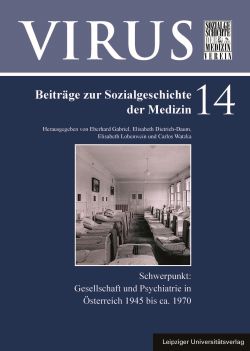
VIRUS Band 14, pp. 309-331, 2020/07/23
Schwerpunkt: Gesellschaft und Psychiatrie in Österreich 1945 bis ca. 1970

The rising popularity of public baths in the first half of the 19th century indeed left clear traces in Styria; compared with the large ritzy baths of the Habsburg Monarchy however the spas of the Dukedom of Styria did not play a significant role. Only the then most well-known spa in Rohitsch-Sauerbruch could attract a transregional clientele, while the young Bad Gleichenberg was just in its starting phase. The facilities of the two Warm Baths Bad Neuhaus and Römerbad Tüffer were rich in tradition but rather small; like Tobelbad which carried the smell of being a bath for the poor and was limited in its size, too. Rather little relevance was given to Wildbad Einöd, Grubegg and Topolschitz, such as to the surfur bath Wörschach and the cold water bath Radegund.At the beginning of the 19th century the Styrian baths were still on a particularly bad way. Due to changed framework conditions however, new health resorts were founded and existing ones were expanded, whereby this development can be observed more strongly especially from the 1840’s onwards. These spas were exemplary facilities, closed towards the outside and a spatial division and specialization of the individual areas happened only gradually. Apart from the real “farmers’ baths”, the clientele of the spas was limited to lower aristocracy and middle to higher bourgeoisie.With regard to the organization of the day a significant change can be observed in the first half of the 19th century: the scheduled duration for bathing and drinking sunk significantly, so that the spa’s guests could dispose of ever more free time. The entertainment offered in the smaller health resorts however was not really considerable. People promenaded and went for a walk, met for social gatherings in the spa’s salon, listened to music or indulged in gambling. Despite all protestations to the contrary of the bath operator, uniformity and monotony were the guiding elements of the daily routine.
Keywords: Styria, first half of the 19th century, social history, everyday life, entertainment, spa, health-resort